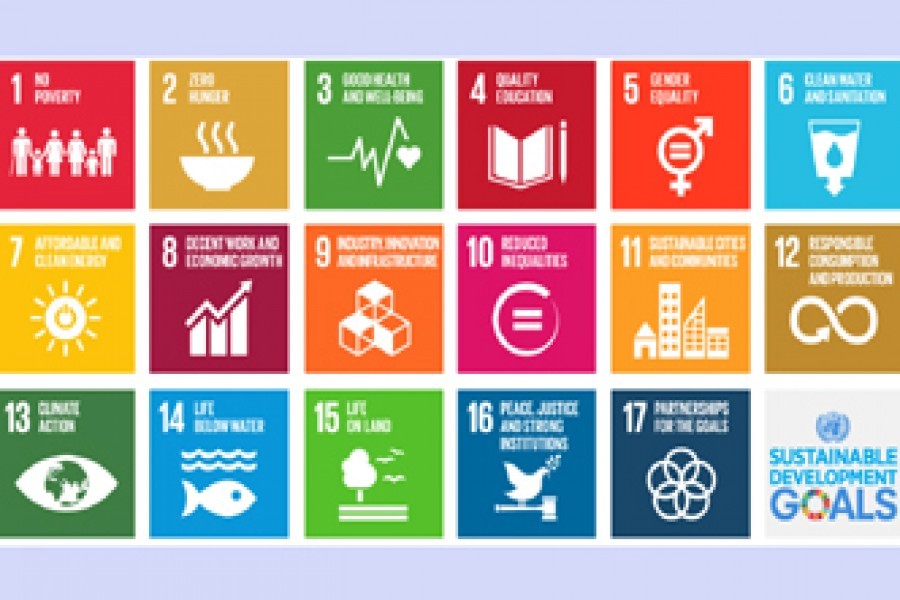On the back of successful attainment of the Millennium Development Goals (MDGs) by 2015 and completion of the first phase of the Sustainable Development Goals (SDGs) on June 30, 2018, Bangladesh has embarked on the mid-term phase to attain a certain cluster of SDGs by 2020. It may be recalled that the United Nations (UN) had set in 2015, 17 goals, 169 targets and 241 indicators under the rubric of SDGs to be achieved by 2030. Thus, in pursuit of the Goals, the country is into the crucial mid-term phase, and the SDG progress report by the General Economics Division of the Planning Commission should be very useful for future planning. It is the first monitoring report of its kind identifying where the public and private sectors need to refocus on and redouble their efforts in, so that sustainable development process gathers momentum keeping to the timeline --unfailingly.
That the economy must grow at a rate of more than 8.0 per cent in the years ahead to be able to absorb the country's fast increasing labour force is a formidable sustainability challenge by itself. Massive foreign direct investment (FDI) inflows, bilaterally or sub-regionally negotiated funds, attracting slices from Asia-wide China-led infrastructure bank coupled with domestic investments through internal resource mobilisations would be needed to spur on that kind of high growth shift. Add to these potential sources, the curbing of capital flight, tax evasion, increasing the existing number of three million taxpayers to 10 million, containing corruption and transport accidents to retrieve some of the 3-4 per cent loss to gross domestic product (GDP) growth eaten up by them, the cumulative national wealth so created could be funnelled into job creation with a diversified skill content.
Garnering funds, however, is not as big a hurdle as it is made out to be; the real issue concerns utilisation of money and efficient implementation of projects. Institutional capacity needs to be upgraded and put in place, especially in nodal agencies for facilitation of investments. The poor quality public spending, deeply eroding culture of loan default, land grabbing and wasteful state-owned enterprises put together make for huge opportunity cost lost to child health, mother care and education, job creation, skill training and the like.
The good thing about a few consecutive years of cross-sector incremental growth pattern is that it gets an economy catapulted on to a high growth trajectory by virtue of an inbuilt sustained push factor. With the lead time of three years since 2015 having been spent up, Bangladesh has 12 years to meet the deadline of 2030 -- not a long time to accomplish a whole lot of multi-disciplinary and synergic tasks. In such a context, the findings of the Planning Commission regarding SDG-9 and SDG-7 underline the challenges posed in implementing the two key clusters of the SDGs. The conclusions on SDG-9 underline two familiar facts: One, available skills fall short of meeting the demands of established industries, to say nothing of catering for emerging industries; two, a mismatch exists between the labour market demand for academic specialties and academic disciplines being offered by the universities. The answer lies in taking a leaf from South Korea's example; it prioritised investment in technical education early in its history. Since industrial sector's contribution to GDP is on the rise and a huge number of infrastructural projects are coming up simultaneously, a spike in demands for technicians and engineers is the likeliest thing to happen in the near future. This approach can run parallel to export-oriented and labour-intensive manufacturing industries like the ready-made garment (RMG) to yield job growths. As for meeting SDG-7, those in charge will have to retool their strategy to access "affordable, reliable and sustainable energy".


